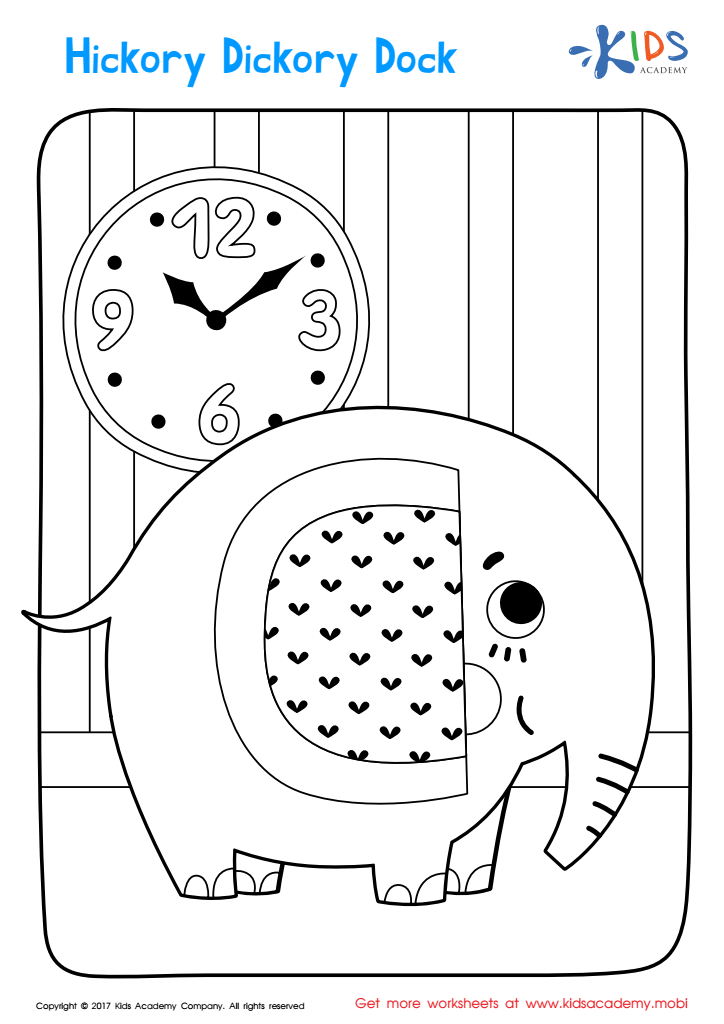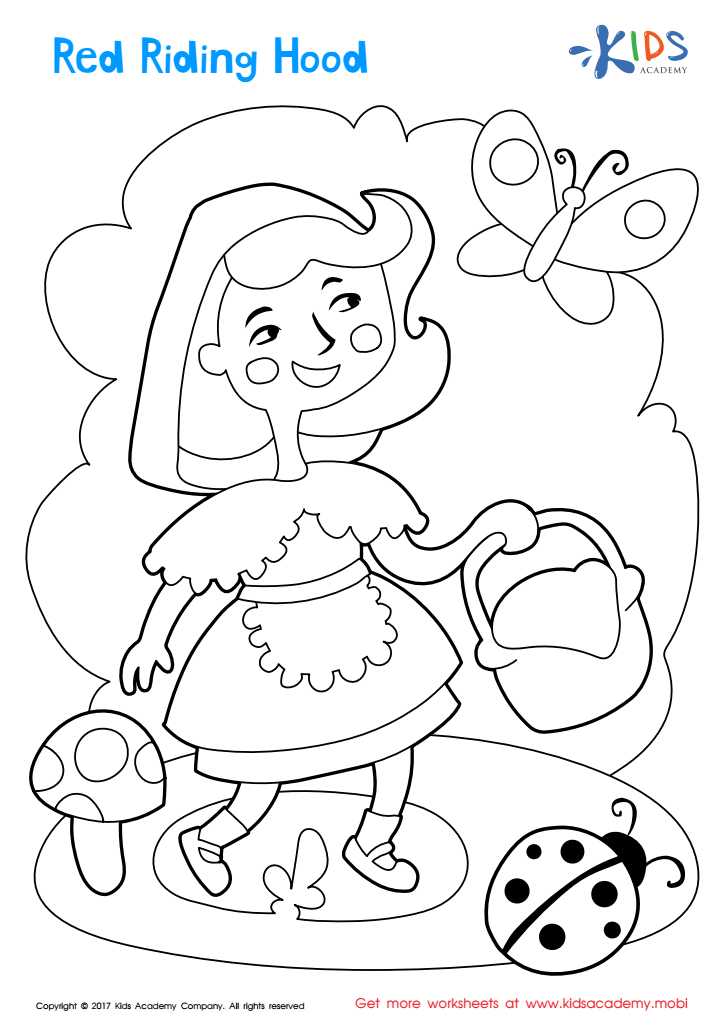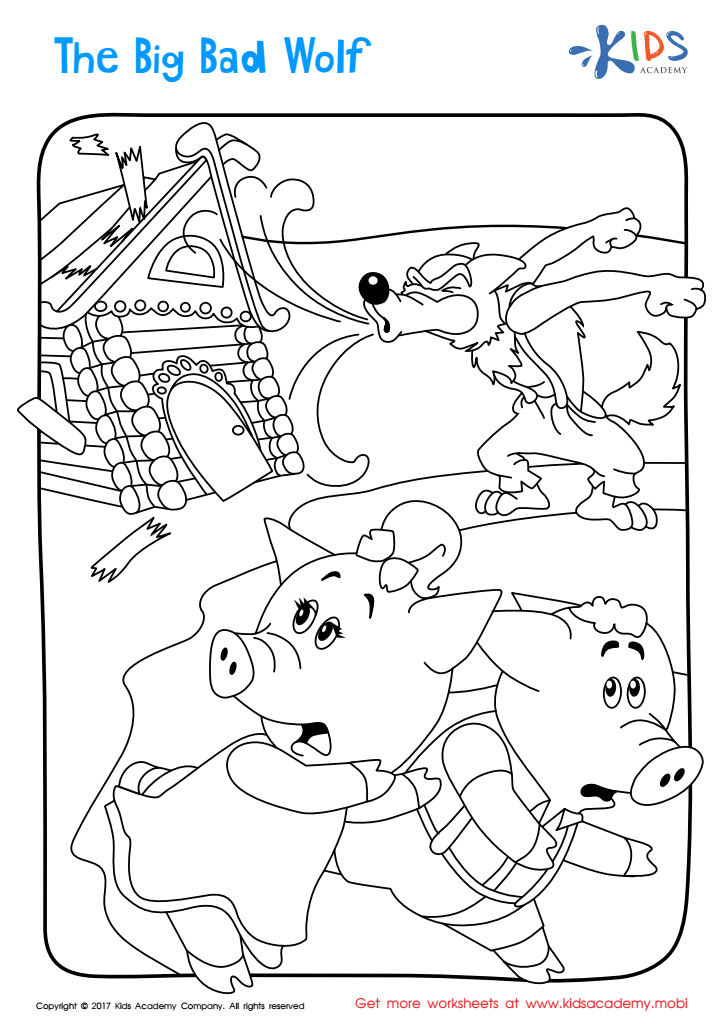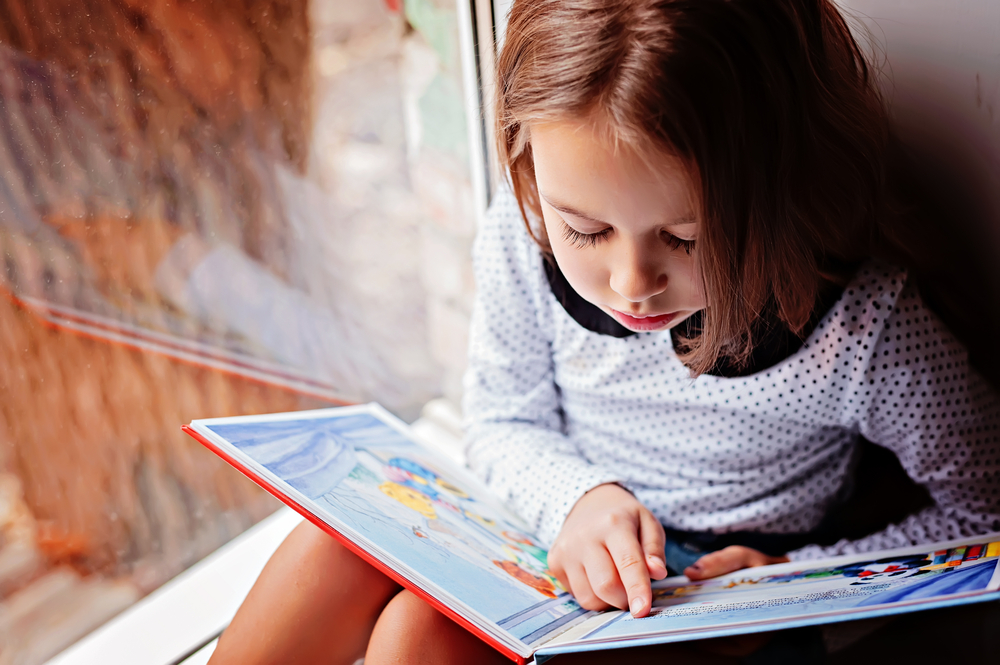Color recognition Reading Fiction Worksheets for Ages 4-5
5 filtered results
-
From - To
Discover our engaging Color Recognition Reading Fiction Worksheets designed specifically for children aged 4-5! These printable worksheets combine fun stories with vibrant illustrations to help young learners identify and name colors while enhancing their reading skills. Each activity captivates your child's imagination and boosts their comprehension through interactive questions and exercises. Perfect for both home and classroom use, these worksheets are ideal for fostering a love of reading while promoting essential cognitive skills. Encourage early literacy and color recognition in a playful setting with our carefully crafted materials. Start the colorful learning adventure today!


Pre–reading Worksheet: What Do You See?


Twinkle Twinkle Little Star Coloring Page


Hickory Dickory Dock Coloring Page


Red Riding Hood Coloring Page


Big Bad Wolf Printable Coloring Page
Color recognition is a fundamental skill that lays the groundwork for a child's learning journey, making it essential for parents and teachers to prioritize this aspect of early education, especially when combined with reading fiction for ages 4-5. Recognizing colors helps children identify and categorize objects in their environment, fostering critical thinking and observational skills. When integrated with reading fiction, color recognition enhances comprehension and creativity, as stories often use colorful illustrations to convey emotions and concepts.
Additionally, discussing the colors of characters and settings can promote vocabulary development, enabling children to express their thoughts and feelings more clearly. This interaction also encourages imaginative play and storytelling, essential components of cognitive growth.
Furthermore, stories rich in color can spark interest and engagement, making reading a joyful experience. As children learn to associate colors with words and narratives, they build a crucial foundation for literacy skills and emotional development. By incorporating color recognition into fiction reading, parents and teachers actively contribute to a child’s overall developmental milestones, ensuring they are prepared for future academic challenges while fostering a lifelong love for reading.
 Assign to My Students
Assign to My Students










.jpg)












